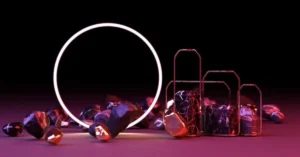Are you tired of giving the same old gifts? Looking for something unique that will leave a lasting impression? Look no further than the money flower bouquet! This creative twist on traditional floral arrangements combines beauty with practicality, offering both aesthetic appeal and financial benefit. Imagine presenting a stunning bouquet made entirely from cash, cleverly arranged to resemble flowers. It’s not just a gift; it’s an experience.
Whether you’re celebrating a birthday, graduation, wedding, or any special occasion, this innovative gift is sure to stand out. And let’s face it—who wouldn’t appreciate some extra cash tucked inside their favorite colors? Making your own money flower bouquet offers that personalized touch while showing off your crafty skills. It’s time to say goodbye to mundane presents and hello to unforgettable gifting!
Benefits of Money Flower Bouquets
Money flower bouquets offer a unique twist on traditional gifting. They blend creativity with practicality, making them memorable and useful gifts. Instead of wilting flowers, recipients receive something they can use immediately or save for later.
These bouquets allow you to customize the amount of money included based on your budget. Whether you choose a small sum or go all out, you can showcase your thoughtfulness while still being financially savvy. It’s an ideal solution when you’re unsure what someone might want or need.
Another significant benefit is their versatility. Money flower bouquets suit various occasions—birthdays, graduations, weddings, or even as a gesture of appreciation. This adaptability makes them appealing for any celebration.
Additionally, presenting cash in this inventive format adds an element of surprise and joy that standard cash gifts often lack. The excitement comes not just from receiving money but also from enjoying the artful display you’ve created with it.
Materials Needed to Make a Money Flower Bouquet
Creating a money flower bouquet requires a few essential materials. Start with the star of the show: cash. Choose denominations that are easy to fold and manage, like $5 or $10 bills. The more colorful your selections, the more visually appealing your bouquet will be.
Next, gather some wire stems or bamboo skewers to create sturdy bases for each bill flower. These will help support the structure of your bouquet and allow you to arrange them easily. You’ll also need floral tape or ribbon to wrap around the base of each stem for added flair.
Don’t forget about decorative elements! Fresh flowers, faux blooms, or even green leaves can enhance your bouquet’s aesthetic appeal while adding depth and texture. Consider selecting colors that complement the cash you’ve chosen.
Grab a vase or an attractive container to hold your masterpiece together once it’s completed. This is where creativity shines—select something unique that reflects the recipient’s personality! With these basic materials in hand, you’re ready to craft a delightful money flower bouquet that’ll impress anyone who receives it.
Step-by-Step Guide to Creating a Money Flower Bouquet
Creating a money flower bouquet is a fun and imaginative process. Start by choosing your currency notes. Fresh or crisp bills work best, as they lend an added touch of elegance. Decide if you want to use single notes or fold them into creative shapes like flowers.
Next, take floral wire and cut it into appropriate lengths for each “stem.” Carefully roll the bill from one end to create a cone shape, securing it with tape as you go along. Once you have your flower shape ready, insert the floral wire into the base for support.
Now it’s time to assemble your bouquet! Choose a sturdy base like foam or a vase filled with decorative stones that can hold your stems in place. Begin arranging the money flowers at various heights for an eye-catching display.
Embellish your bouquet with greenery or other decorative elements such as ribbons and faux flowers to enhance its visual appeal. This personal touch will make all the difference and transform simple cash into a delightful gift anyone would appreciate!
Tips for Customizing Your Money Flower Bouquet
Customizing your money flower bouquet can make it even more special and meaningful. Start by selecting colors that resonate with the recipient’s personality or match the occasion. For example, vibrant colors may be perfect for a birthday celebration, while softer hues are ideal for weddings.
Next, think about incorporating various denominations into your design. Mixing smaller bills with larger ones adds visual interest and variety to your bouquet. You could also fold the bills in different ways; consider origami techniques like roses or butterflies to create unique shapes.
Adding personal touches can elevate your gift further. Try attaching small notes or messages between the flowers to convey heartfelt sentiments. This not only enhances emotional value but also shows thoughtfulness behind your creation.
Don’t forget about presentation! Choose an attractive vase or wrap to complement your bouquet’s theme. Adding decorative elements such as ribbons or artificial leaves can enhance its overall appeal and make it truly stand out at any event.
Occasions for Giving a Money Flower Bouquet
A money flower bouquet is a versatile gift that can brighten up various occasions. Birthdays are a popular time to give this unique present. Instead of traditional flowers, imagine the surprise on your loved one’s face when they receive a beautifully crafted bouquet filled with cash or gift cards.
Weddings also provide an excellent opportunity for money flower bouquets. Guests often want to contribute financially to the couple’s new life together, and what better way than presenting your well wishes in floral form? It adds creativity and thoughtfulness to the typical monetary gift.
Graduations deserve special recognition too. A money flower bouquet celebrates achievements while providing practical support for future endeavors—be it further education or starting a career. It shows you care about their journey ahead.
Holidays like Christmas or even Valentine’s Day can be transformed into memorable experiences with these artistic arrangements. They convey affection while adding financial joy during times when expenses may run high, making them ideal for any festive celebration.
Etiquette and Cultural Considerations
When giving a money flower bouquet, it’s essential to consider the recipient’s cultural background. Different cultures have varied beliefs about money and gifting practices. For instance, in some Asian cultures, presenting cash can symbolize prosperity and good fortune. However, it may be seen as impersonal or inappropriate in others.
Presentation matters significantly. Ensure that your bouquet looks thoughtful and well-crafted rather than hastily assembled. Adding personal touches like handwritten notes can enhance the sentiment behind your gift. Such gestures show that you’ve put time into creating something special.
Remember to respect any local customs surrounding gifts of money. In certain societies, specific amounts might carry different meanings or implications; for example, even numbers are often avoided at funerals because they symbolize pairing.
Always consider the occasion when choosing how much money to include in your bouquet. The amount should align with both your relationship with the recipient and the nature of the event—be it a wedding or graduation—to ensure it conveys genuine goodwill without crossing boundaries.
Conclusion
Creating a money flower bouquet is not just a fun and creative project; it’s also a meaningful gift that combines beauty with practicality. Whether you’re celebrating a birthday, wedding, graduation, or any other special occasion, these unique bouquets stand out from traditional floral arrangements. They allow you to express your affection while giving something truly useful.
The process of making one can be as enjoyable as the joy it brings to the recipient. By personalizing your bouquet and selecting materials that resonate with the person you’re gifting it to, you ensure that every detail reflects thoughtfulness.
As trends evolve in gifting practices, money flower bouquets have solidified their place as an innovative alternative for those looking for something more than flowers alone. Embrace this opportunity to blend creativity with financial support — after all, who wouldn’t appreciate receiving cash in such an artistic form?









